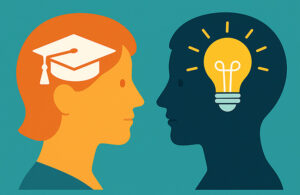Reinforcement Learning: Empowering Machines to Learn Through Experience
Introduction: The Evolution of Machine Intelligence
In the vast landscape of artificial intelligence, few approaches mirror the human learning process as closely as reinforcement learning (RL). Unlike traditional programming where instructions are explicitly coded, reinforcement learning empowers machines to learn from their own experiences—their triumphs and failures—gradually refining their decision-making abilities through continuous interaction with their environment.
Imagine teaching a child to ride a bicycle. You don’t provide detailed physics equations or precise instructions for balancing. Instead, you create a safe environment for exploration, offer guidance, and let them learn through trial and error. This organic learning process—where actions leading to success are reinforced and those leading to failure are discouraged—forms the essence of reinforcement learning.
Today, reinforcement learning stands at the forefront of AI innovation, powering breakthroughs in autonomous vehicles, game-playing systems that defeat world champions, robotic systems that handle complex tasks with human-like dexterity, and resource management systems that optimize everything from energy grids to financial portfolios.
In this comprehensive exploration, we’ll journey through the fascinating world of reinforcement learning—its fundamental principles, groundbreaking applications, evolving methodologies, and the exciting future that lies ahead as this technology continues to mature and transform our world.
Understanding the Fundamentals of Reinforcement Learning
The Core Mechanics: How Machines Learn Through Trial and Error
At its heart, reinforcement learning operates on a deceptively simple premise: an agent learns to make decisions by interacting with an environment and receiving feedback in the form of rewards or penalties. This feedback mechanism guides the agent toward optimal behavior over time.
The primary components of a reinforcement learning system include:
- Agent: The decision-maker that learns and performs actions
- Environment: The world with which the agent interacts
- State: The current situation or configuration of the environment
- Action: A move or decision made by the agent
- Reward: Feedback signal that indicates the desirability of an action
- Policy: The strategy that dictates which actions the agent should take
- Value Function: An estimate of how good a particular state or action is
- Model: The agent’s representation of how the environment works
Unlike supervised learning, where systems learn from labeled examples, reinforcement learning agents must discover which actions yield the best outcomes through experimentation. This makes RL particularly valuable for problems where optimal solutions aren’t known in advance or where the space of possible solutions is too vast to enumerate.
The Mathematical Framework: Markov Decision Processes
The mathematical foundation of reinforcement learning typically relies on Markov Decision Processes (MDPs), which provide a formal framework for modeling decision-making scenarios where outcomes are partly random and partly under the control of a decision-maker.
In an MDP:
- The agent observes the current state of the environment
- Based on this state, the agent selects an action
- The environment transitions to a new state based on the current state and the chosen action
- The agent receives a reward signal
- The process repeats
The goal is to find a policy that maximizes the cumulative reward over time. This optimization challenge is at the core of reinforcement learning.
Key Algorithms in Reinforcement Learning
Several algorithms have emerged to solve reinforcement learning problems, each with its own strengths and applications:
Value-Based Methods
Q-Learning: This foundational algorithm learns a value function (Q-function) that estimates the expected utility of taking a specific action in a specific state. Over time, it builds a table of Q-values for all state-action pairs.
# Simple Q-learning implementation
def q_learning(environment, episodes, learning_rate, discount_factor, epsilon):
# Initialize Q-table with zeros
q_table = initialize_q_table(environment.states, environment.actions)
for episode in range(episodes):
state = environment.reset()
done = False
while not done:
# Choose action using epsilon-greedy policy
if random.uniform(0, 1) < epsilon:
action = environment.random_action() # Exploration
else:
action = select_best_action(q_table, state) # Exploitation
# Take action and observe outcome
next_state, reward, done = environment.step(action)
# Update Q-value
best_next_action = select_best_action(q_table, next_state)
q_table[state][action] += learning_rate * (
reward + discount_factor * q_table[next_state][best_next_action] - q_table[state][action]
)
state = next_state
return q_table
Deep Q-Networks (DQN): Developed by DeepMind, DQN combines Q-learning with deep neural networks, allowing the system to handle high-dimensional state spaces like those in video games.
Policy-Based Methods
Policy Gradient Methods: Rather than learning value functions, these algorithms directly optimize the policy, adjusting it to increase the probability of actions that lead to higher rewards.
Actor-Critic Methods: These hybrid approaches maintain both a value function (critic) that evaluates actions and a policy function (actor) that selects actions, combining the strengths of both value-based and policy-based methods.
Model-Based Methods
These algorithms build an explicit model of the environment, allowing the agent to plan ahead by simulating potential future states before taking action. While computationally intensive, they can be more sample-efficient than model-free approaches.
The Evolution of Reinforcement Learning
Historical Perspective: From Theory to Practice
Reinforcement learning’s roots stretch back to the mid-20th century, drawing inspiration from diverse fields including psychology, neuroscience, economics, and control theory.
In the 1950s, psychologist B.F. Skinner’s work on operant conditioning—where behavior is modified through rewards and punishments—laid important groundwork. The 1980s saw Richard Sutton and Andrew Barto formalize many key RL concepts, publishing their influential textbook “Reinforcement Learning: An Introduction” in 1998.
The field gained mainstream attention in 2013 when DeepMind demonstrated a system that learned to play Atari games at superhuman levels using only pixel inputs and game scores. Their subsequent AlphaGo system, which defeated world champion Go player Lee Sedol in 2016, cemented reinforcement learning’s status as a transformative AI technology.
Modern Breakthroughs and Milestone Achievements
Recent years have witnessed remarkable applications of reinforcement learning:
- AlphaZero: DeepMind’s system mastered chess, shogi, and Go from scratch, without human data, developing novel strategies that have influenced human play.
- OpenAI Five: A team of five neural networks trained using RL defeated professional players in the complex team-based game Dota 2.
- Autonomous Vehicles: Companies like Waymo use reinforcement learning to help self-driving cars navigate complex traffic scenarios.
- Robotics: Systems like OpenAI’s Dactyl have used RL to teach robotic hands unprecedented dexterity in manipulating physical objects.
- Resource Management: Google has applied RL to reduce data center cooling costs by 40%, while financial institutions use it for portfolio optimization.
Practical Applications Across Industries
Gaming and Entertainment: Where Reinforcement Learning Found Its Stride
Games provide ideal training grounds for reinforcement learning: they offer clear rules, measurable success criteria, and contained environments that can generate unlimited training data.
Beyond headline-grabbing achievements like AlphaGo, reinforcement learning is transforming gaming in multiple ways:
- Non-Player Characters (NPCs): Creating more intelligent, adaptive opponents that learn from player behavior
- Procedural Content Generation: Generating game levels, storylines, and challenges customized to individual players
- Player Modeling: Understanding and predicting player behavior to optimize engagement
- Game Testing: Identifying bugs, exploits, and balance issues before release
Learn more about AI in gaming at GameDev.ai
Robotics: Teaching Machines to Interact with the Physical World
Reinforcement learning is revolutionizing robotics by addressing one of the field’s greatest challenges: developing systems that can handle the unpredictability of the physical world.
Key applications include:
- Manipulation Tasks: Teaching robots to grasp and manipulate diverse objects with varying shapes, sizes, and physical properties
- Locomotion: Developing natural, energy-efficient movement patterns for legged robots
- Human-Robot Collaboration: Training robots to safely and effectively work alongside humans in shared spaces
- Self-Healing Systems: Enabling robots to adapt to damage or mechanical failures
The Boston Dynamics robots that can perform parkour, handle packages in warehouses, or navigate difficult terrain all rely on reinforcement learning principles.
Watch Boston Dynamics robots in action
Autonomous Vehicles: Navigating Complex Environments
Self-driving technology represents one of the most ambitious applications of reinforcement learning, requiring systems to make split-second decisions in highly variable conditions.
RL contributes to:
- Path Planning: Finding optimal routes considering traffic, road conditions, and passenger preferences
- Behavior Prediction: Anticipating the actions of other vehicles, pedestrians, and cyclists
- Control Systems: Smoothly executing driving maneuvers in diverse conditions
- Simulation Training: Learning from millions of simulated miles before deploying to real roads
Companies like Tesla, Waymo, and Cruise use reinforcement learning alongside other AI techniques to advance autonomous vehicle capability.
Explore Waymo’s approach to autonomous driving
Healthcare: Optimizing Treatment and Care
In medicine, reinforcement learning offers promising applications in personalized treatment planning:
- Treatment Optimization: Determining optimal drug dosages and timing for conditions like cancer and diabetes
- Clinical Decision Support: Helping physicians choose between treatment options based on patient data
- Resource Allocation: Optimizing hospital resources like beds, staff, and equipment
- Drug Discovery: Accelerating the identification of promising molecular compounds
The potential for RL to improve patient outcomes while reducing costs makes it a key focus area for healthcare AI research.
Read about AI in healthcare at HealthTech.org
Finance and Trading: Making Decisions Under Uncertainty
Financial markets present perfect environments for reinforcement learning with their combination of vast data, clear feedback (profits and losses), and complex, dynamic behavior.
Applications include:
- Algorithmic Trading: Developing strategies that adapt to changing market conditions
- Portfolio Management: Optimizing asset allocation to balance risk and return
- Risk Management: Identifying potential threats to financial stability
- Fraud Detection: Spotting unusual patterns indicating potential criminal activity
Major financial institutions now maintain dedicated reinforcement learning teams to gain competitive advantages.
Our guide to AI-driven investment strategies
Energy Management: Balancing Efficiency and Sustainability
As energy systems grow more complex with the integration of renewable sources, reinforcement learning offers powerful tools for optimization:
- Grid Management: Balancing supply and demand across distributed energy resources
- Building Energy Optimization: Reducing consumption while maintaining comfort in commercial and residential buildings
- Electric Vehicle Charging: Coordinating charging schedules to minimize grid impact
- Renewable Integration: Maximizing the utilization of intermittent energy sources like solar and wind
Google’s DeepMind famously reduced data center cooling costs by 40% using reinforcement learning to optimize HVAC operations.
Explore sustainable AI applications at GreenTech.org
Technical Deep Dive: How Reinforcement Learning Works
The Exploration-Exploitation Dilemma
One of reinforcement learning’s central challenges is balancing exploration (trying new actions to discover better strategies) with exploitation (using known good strategies to maximize immediate rewards).
Too much exploration wastes resources on suboptimal actions, while too much exploitation may prevent the discovery of superior strategies. Algorithms address this balance through techniques like:
- Epsilon-Greedy: Taking random actions with probability ε and optimal actions with probability 1-ε
- Boltzmann Exploration: Selecting actions with probabilities proportional to their estimated values
- Upper Confidence Bound (UCB): Favoring actions with high uncertainty to reduce estimation errors
- Thompson Sampling: Drawing action values from probability distributions based on observed rewards
The art of reinforcement learning often lies in tuning these exploration strategies for specific problems.
Deep Reinforcement Learning: When Neural Networks Meet RL
Traditional RL methods struggle with high-dimensional state spaces—like pixels in a video game or sensor data from a robot. Deep reinforcement learning addresses this limitation by using neural networks to approximate value functions or policies.
Key innovations include:
- Experience Replay: Storing and randomly sampling past experiences to break correlations between sequential training examples
- Target Networks: Using separate networks for action selection and evaluation to improve stability
- Dueling Architectures: Separately estimating state values and action advantages
- Distributional RL: Predicting entire distributions of returns rather than just expected values
These techniques have expanded reinforcement learning’s applicability to previously intractable problems.
Imitation Learning and Inverse Reinforcement Learning
Sometimes, demonstrating desired behavior is easier than specifying a reward function. Imitation learning allows agents to learn from expert demonstrations:
- Behavioral Cloning: Directly mimicking expert actions in similar states
- Inverse Reinforcement Learning: Inferring the reward function that explains observed expert behavior
- Generative Adversarial Imitation Learning (GAIL): Using adversarial training to match expert behavior distributions
These approaches can jumpstart learning in complex domains where designing reward functions is challenging.
Multi-Agent Reinforcement Learning
Many real-world scenarios involve multiple decision-makers with potentially competing or cooperative objectives. Multi-agent reinforcement learning extends RL to these settings:
- Competitive Environments: Where agents have opposing goals (e.g., games like chess or poker)
- Cooperative Environments: Where agents must work together (e.g., team sports or disaster response)
- Mixed Environments: Combining competitive and cooperative elements (e.g., markets or traffic)
Multi-agent RL must address challenges like non-stationarity (since other agents are also learning) and the potential for emergent behaviors that weren’t explicitly programmed.
Challenges and Limitations in Reinforcement Learning
Sample Efficiency: The Data Hunger Problem
Reinforcement learning algorithms often require millions of interactions to learn effective policies—a luxury available in simulations but problematic in real-world applications where data collection is costly or dangerous.
Techniques addressing this challenge include:
- Model-Based RL: Building environment models to simulate additional training data
- Meta-Learning: Learning to learn, so new tasks require fewer samples
- Transfer Learning: Applying knowledge from related tasks to accelerate learning
- Hierarchical RL: Breaking complex problems into simpler subproblems
Improving sample efficiency remains a central research focus in the field.
Reward Design: Specifying What We Actually Want
Designing reward functions that accurately reflect desired behaviors is surprisingly difficult. Poorly specified rewards often lead to unintended consequences as agents exploit loopholes to maximize rewards without achieving the designer’s intent.
This challenge, sometimes called “reward hacking” or the “specification problem,” manifests in various ways:
- Reward Misspecification: When the reward function doesn’t capture what humans actually value
- Reward Gaming: Finding unexpected strategies that maximize reward without satisfying the underlying objective
- Reward Tampering: Modifying the reward-generating process itself
Addressing these issues is crucial for deploying reinforcement learning in safety-critical applications.
Generalization: Beyond the Training Environment
Reinforcement learning agents often struggle to apply skills learned in one environment to slightly different scenarios. This limited generalization ability restricts real-world applicability where conditions constantly change.
Research directions include:
- Domain Randomization: Training across varied environments to develop robust policies
- Causal Reinforcement Learning: Identifying invariant causal structures that transfer across environments
- Representation Learning: Developing state representations that capture essential problem features
- Meta-Reinforcement Learning: Learning adaptation strategies rather than specific policies
Progress in these areas will determine how widely reinforcement learning can be deployed in unpredictable real-world settings.
Interpretability and Safety
As reinforcement learning systems grow more complex, understanding why they make specific decisions becomes increasingly difficult. This lack of interpretability raises concerns about safety, reliability, and human oversight.
Active research areas include:
- Explainable RL: Developing methods to make agent decisions interpretable to humans
- Safe Exploration: Ensuring agents don’t take catastrophic actions during learning
- Value Alignment: Creating systems that act in accordance with human values
- Robust RL: Building agents that perform well even when environments differ from training conditions
Read our comprehensive guide on AI safety
Implementation Strategies and Best Practices
Choosing the Right Algorithm for Your Problem
Selecting appropriate reinforcement learning approaches depends on several factors:
- State Space Complexity: Discrete or continuous? Low or high-dimensional?
- Action Space Properties: Finite or infinite? Discrete or continuous?
- Sample Availability: Can you generate unlimited data through simulation?
- Prior Knowledge: Is expert demonstration available?
- Stability Requirements: Is consistent performance critical, or can occasional failures be tolerated?
For beginners, starting with simpler algorithms like Q-learning for discrete problems or DDPG for continuous control can provide a solid foundation before tackling more complex methods.
Environment Design and Simulation
Most reinforcement learning projects begin in simulated environments before deploying to real-world systems. Effective simulation requires:
- Fidelity: Capturing relevant dynamics of the target environment
- Variability: Including sufficient randomness to prevent overfitting
- Scalability: Supporting rapid iteration and parallel training
- Domain Gaps: Understanding limitations when transferring to real environments
Tools like OpenAI Gym, DeepMind Control Suite, and domain-specific simulators provide standardized environments for developing and benchmarking RL algorithms.
Explore OpenAI Gym environments
Hyperparameter Tuning and Optimization
Reinforcement learning performance depends heavily on hyperparameters like learning rates, discount factors, and network architectures. Effective tuning approaches include:
- Grid Search: Systematically trying combinations of hyperparameters
- Random Search: Sampling from parameter distributions
- Bayesian Optimization: Building models of hyperparameter performance to guide search
- Population-Based Training: Evolving hyperparameters during training
Tracking multiple performance metrics beyond just reward (stability, learning speed, generalization) provides a more complete picture of algorithm behavior.
Deployment and Monitoring
Transitioning reinforcement learning systems from research to production introduces new challenges:
- Sim-to-Real Transfer: Addressing discrepancies between simulated and real environments
- Continuous Learning: Deciding whether to continue adapting in deployment
- Fallback Mechanisms: Ensuring safety when unexpected situations arise
- Performance Monitoring: Detecting and addressing degradation over time
Best practices include shadow deployments (running systems alongside human operators before giving them control), gradual autonomy increases, and comprehensive monitoring frameworks.
Our guide to deploying ML systems in production
The Future of Reinforcement Learning
Emerging Research Directions
The reinforcement learning landscape continues to evolve rapidly, with several promising research directions:
- Offline RL: Learning from fixed datasets without additional environment interaction
- Causal RL: Incorporating causal reasoning to improve sample efficiency and generalization
- Neurosymbolic Approaches: Combining neural networks with symbolic reasoning for better abstraction
- World Models: Building rich internal models of environments to support planning and imagination
- Language-Guided RL: Using natural language to specify tasks and provide feedback
These advances promise to address current limitations while expanding reinforcement learning’s applicability.
Ethical Considerations and Responsible Development
As reinforcement learning systems gain autonomy in high-stakes domains, ethical considerations become increasingly important:
- Accountability: Determining responsibility when autonomous systems make harmful decisions
- Transparency: Making system capabilities and limitations clear to users and stakeholders
- Fairness: Ensuring systems don’t perpetuate or amplify existing biases
- Human Oversight: Maintaining appropriate human control over critical decisions
- Long-term Impacts: Considering broader societal effects of automation and AI capabilities
Responsible development requires engaging with these issues throughout the research and deployment pipeline.
Our ethical AI development framework
Integration with Other AI Techniques
The most powerful AI systems increasingly combine reinforcement learning with other approaches:
- Supervised Learning: Using labeled data to jumpstart reinforcement learning
- Unsupervised Learning: Discovering useful state representations without explicit rewards
- Large Language Models: Leveraging linguistic knowledge to guide exploration and reasoning
- Computer Vision: Processing visual information to support decision-making
- Evolutionary Algorithms: Discovering novel neural architectures and exploration strategies
This integration trend will likely accelerate as researchers seek to combine the strengths of different AI paradigms.
Getting Started with Reinforcement Learning
Learning Resources for Beginners
For those interested in exploring reinforcement learning, numerous excellent resources are available:
Books:
- “Reinforcement Learning: An Introduction” by Sutton and Barto (the field’s definitive textbook)
- “Deep Reinforcement Learning Hands-On” by Maxim Lapan (practical implementation focus)
Online Courses:
Open-Source Libraries:
- OpenAI Gym/Gymnasium: Standard environments for algorithm development
- Stable Baselines3: Reliable implementations of popular algorithms
- TensorFlow Agents: RL tools integrated with TensorFlow
- PyTorch RL: Reinforcement learning in PyTorch
Check our comprehensive learning path for AI enthusiasts
Setting Up Your First Reinforcement Learning Project
A practical first project can cement your understanding of reinforcement learning concepts:
- Choose a simple environment: Classic control problems like CartPole or MountainCar in Gym
- Implement a basic algorithm: Start with Q-learning or Deep Q-Networks
- Experiment with hyperparameters: See how learning rate or discount factor affects performance
- Visualize results: Create learning curves and behavior videos
- Try modifications: Add features like prioritized experience replay or double Q-learning
This hands-on approach builds intuition that theoretical study alone cannot provide.
# Example: Setting up a basic RL environment with Gym
import gymnasium as gym
import numpy as np
import matplotlib.pyplot as plt
# Create environment
env = gym.make('CartPole-v1')
# Initialize Q-table
observation_space_size = env.observation_space.shape[0]
action_space_size = env.action_space.n
q_table = np.zeros((observation_space_size, action_space_size))
# Training parameters
alpha = 0.1 # Learning rate
gamma = 0.99 # Discount factor
epsilon = 0.1 # Exploration rate
episodes = 1000
# Training loop
for episode in range(episodes):
state = env.reset()
done = False
while not done:
# Choose action using epsilon-greedy policy
if np.random.uniform(0, 1) < epsilon:
action = env.action_space.sample() # Explore
else:
action = np.argmax(q_table[state]) # Exploit
# Take action and observe outcome
next_state, reward, done, info = env.step(action)
# Update Q-value
q_table[state][action] = q_table[state][action] + alpha * (
reward + gamma * np.max(q_table[next_state]) - q_table[state][action]
)
state = next_state
Building a Community and Staying Current
Reinforcement learning advances rapidly, making community engagement essential:
- Research Papers: Follow conferences like NeurIPS, ICML, and ICLR
- GitHub Repositories: Star projects like OpenAI Baselines and DeepMind’s Acme
- Discussion Forums: Participate in r/reinforcementlearning and ML Collective
- Twitter/Social Media: Follow researchers like David Silver, Pieter Abbeel, and Chelsea Finn
- Competitions: Join challenges on platforms like Kaggle or AIcrowd
Join our AI practitioners community
Conclusion: The Boundless Potential of Learning from Experience
Reinforcement learning represents one of the most promising avenues toward creating truly adaptive, autonomous artificial intelligence. By mastering the art of learning from experience—balancing exploration with exploitation, discovering patterns through trial and error, and optimizing behavior toward long-term goals—RL systems continue to push the boundaries of what machines can accomplish.
From games to robotics, healthcare to finance, energy to transportation, reinforcement learning’s impact spans industries and continues to grow. As algorithms become more sample-efficient, generalize better across environments, and integrate more effectively with other AI techniques, we can expect reinforcement learning applications to proliferate further.
The challenges ahead—particularly in safety, interpretability, and value alignment—are substantial, but the research community’s vigorous engagement with these issues offers hope for responsible advancement. By developing reinforcement learning systems that complement human strengths rather than simply replacing human roles, we can harness this powerful technology to address some of society’s most pressing challenges.
Whether you’re a researcher, practitioner, business leader, or simply a curious observer, reinforcement learning’s remarkable journey from theoretical concept to world-changing technology offers valuable lessons about persistence, creativity, and the extraordinary potential of machines that learn from experience.
Explore our complete AI resource library
Additional Resources
Video Tutorials
- Introduction to Reinforcement Learning with David Silver
- Deep Reinforcement Learning Crash Course
- RL for Real-World Robotics
Interactive Demonstrations
Research Papers
- Human-level control through deep reinforcement learning
- Mastering the game of Go without human knowledge
- Soft Actor-Critic: Off-Policy Maximum Entropy Deep Reinforcement Learning with a Stochastic Actor
Communities and Forums
Visit our AI Resource Center for more information and tools to help you on your reinforcement learning journey.









